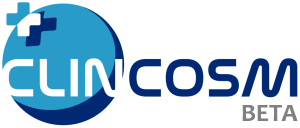Extremely Low Frequency Magnetic Fields in Acute Ischemic Stroke
Study Details
Study Description
Brief Summary
There is great interest in the development of novel therapies for acute ischemic stroke because, to date, the thrombolysis is the only approved treatment. Recent evidence suggests that extremely low frequency magnetic fields (ELF-MF) could be an alternative approach for acute ischemic stroke therapy because of their effects on the main mechanisms of brain ischemic damage and regeneration.The main purpose of this open label, one arm, dose escalation study is the validation of ELF-MF stimulation as non-invasive, safe and effective tool to promote recovery in acute ischemic stroke patients Nine patients will be treated daily for 5 consecutive days, starting within 48 h from the onset of stroke. Three dose cohorts of three patients each, will be stimulated with pulsed ELF-MF (75 Hz, 1,8 mT) at increasing daily exposure (45, 120, 240 min).The primary outcome (safety endpoint) will be evaluated by the incidence of adverse events and mortality throughout the stimulation period and the 1-year follow-up. Secondary outcomes will consist in change from baseline in clinical and radiological scores.
| Condition or Disease | Intervention/Treatment | Phase |
|---|---|---|
|
N/A |
Study Design
Arms and Interventions
| Arm | Intervention/Treatment |
|---|---|
| Experimental: Pulsed ELF-MF Nine patients will be treated daily for 5 consecutive days, starting within 48 h from the onset of stroke. Three dose cohorts of three patients each, will be stimulated with pulsed ELF-MF at increasing daily exposure (45, 120, 240 min). |
Device: pulsed ELF-MF
(75 Hz, 1,8 mT)
|
Outcome Measures
Primary Outcome Measures
- Incidence of adverse events [1 year]
The primary outcome will be evaluated by the incidence of adverse events (AEs), severe AEs (SAEs) and mortality throughout the stimulation period and the 1-year follow-up.
Secondary Outcome Measures
- Change in National Institutes of Health Stroke Scale (NIHSS) score [Baseline; immediately, 30, 90, and 365 days after pulsed ELF-MF treatment]
NIHSS is a validated scale from 1-42 to evaluate stroke severity
- Change in Modified Rankin Scale (mRS) score [Baseline;immediately, 30, 90, and 365 days after pulsed ELF-MF treatment]
mRS is a straightforward evaluation of the functional limitations from stroke
- Change in Barthel Index (BI) [Baseline;immediately, 30, 90, and 365 days after pulsed ELF-MF treatment]
BI is a reliable disability profile scale from 0 to 15 to evaluate a patient's self-care abilities in 10 areas, including bowel and bladder control
- Change (Δ)in ischemic lesion volume (ILV) determined by brain MRI [Baseline; 30 days.]
ΔILV is defined as ILV measured by FLAIR sequence at 30 days after pulsed ELF-MF treatment minus the initial ILV measured by diffusion-weighted imaging (DWI) trace sequence before pulsed ELF-MF treatment.
Eligibility Criteria
Criteria
Inclusion Criteria:
-
males or females, aged over 18
-
evidence of mono-hemispheric ischemic stroke confirmed by brain MRI
-
first onset stroke patients
-
onset of symptoms within 48 hours prior to enrollment
-
National Institutes of Health Stroke Scale (NIHSS) score greater than 4
-
patient is alert, medically stable according to the treating physician and able to follow simple verbal commands
-
signed written informed consent prior to entry into the study
Exclusion Criteria:
-
acute intracranial hemorrhage confirmed by brain CT or MRI scan
-
previous ischemic or hemorrhagic stroke
-
seizure at the onset of stroke or a history of epilepsy
-
contraindications to transcranial magnetic stimulation: implanted metallic parts of implanted electronic devices, including pacemakers,defibrillators, implanted medication pump, or implanted brain stimulator
-
aneurysm clip or other metal in body
-
life expectancy less than 3 months
-
other serious illness, e.g., severe hepatic, cardiac, or renal failure, acute myocardial infarction, or complex disease that may confound treatment assessment
-
women known to be pregnant, lactating or having a positive or indeterminate pregnancy test
-
any condition that would prevent the subject from giving voluntary informed consent
-
current participation in another study with an investigational drug or device
Contacts and Locations
Locations
| Site | City | State | Country | Postal Code | |
|---|---|---|---|---|---|
| 1 | Institute of Neurology, Campus Biomedico University | Rome | Italy | 00128 |
Sponsors and Collaborators
- Campus Bio-Medico University
Investigators
- Principal Investigator: Vincenzo Di Lazzaro, MD, Institute of Neurology, Campus Biomedico University of Rome
Study Documents (Full-Text)
None provided.More Information
Publications
- Capone F, Dileone M, Profice P, Pilato F, Musumeci G, Minicuci G, Ranieri F, Cadossi R, Setti S, Tonali PA, Di Lazzaro V. Does exposure to extremely low frequency magnetic fields produce functional changes in human brain? J Neural Transm (Vienna). 2009 Mar;116(3):257-65. doi: 10.1007/s00702-009-0184-2. Epub 2009 Feb 3.
- Di Lazzaro V, Capone F, Apollonio F, Borea PA, Cadossi R, Fassina L, Grassi C, Liberti M, Paffi A, Parazzini M, Varani K, Ravazzani P. A consensus panel review of central nervous system effects of the exposure to low-intensity extremely low-frequency magnetic fields. Brain Stimul. 2013 Jul;6(4):469-76. doi: 10.1016/j.brs.2013.01.004. Epub 2013 Feb 4. Review.
- ELF-01
